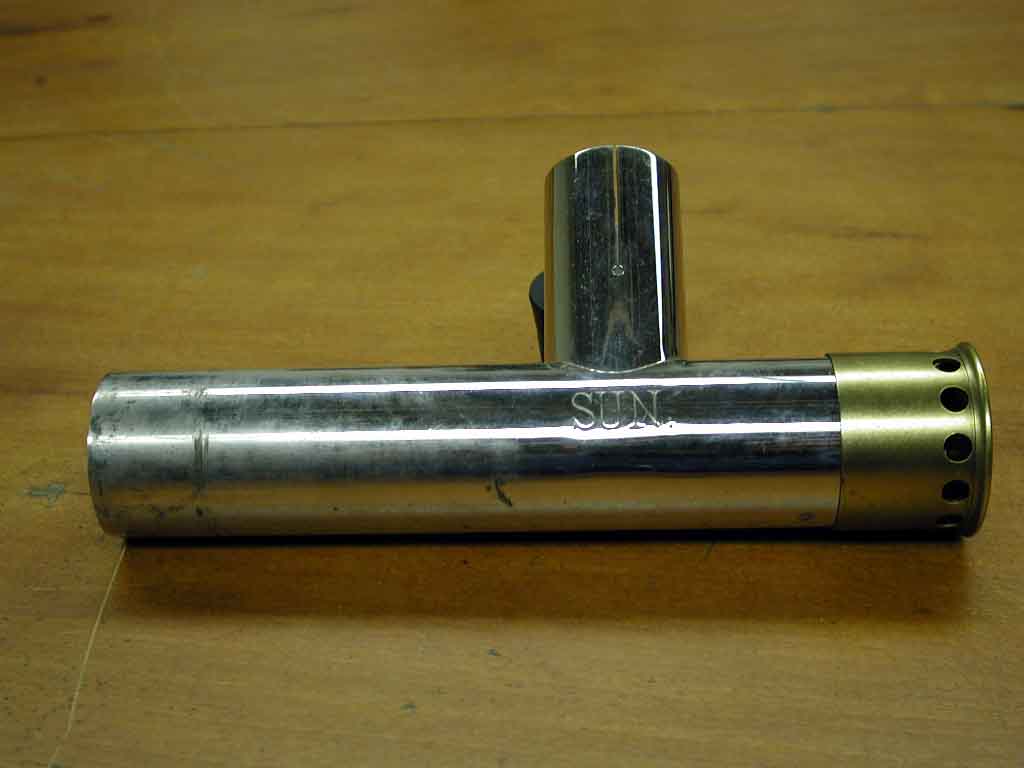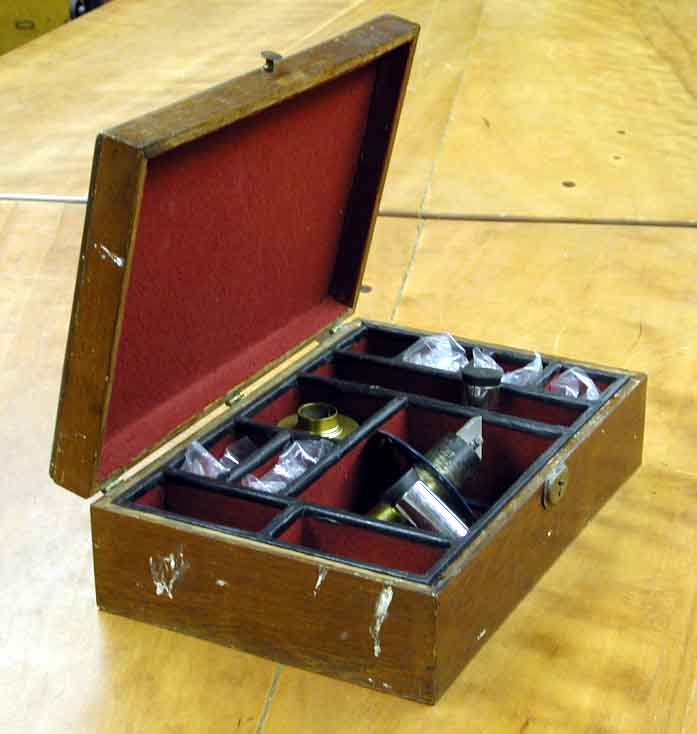 |
The eyepiece box is made of
oak, the partitions lift out and are made of poplar. The dimensions are
4 - 1/2' x 10 - 1/4" x 15 - 1/2". |
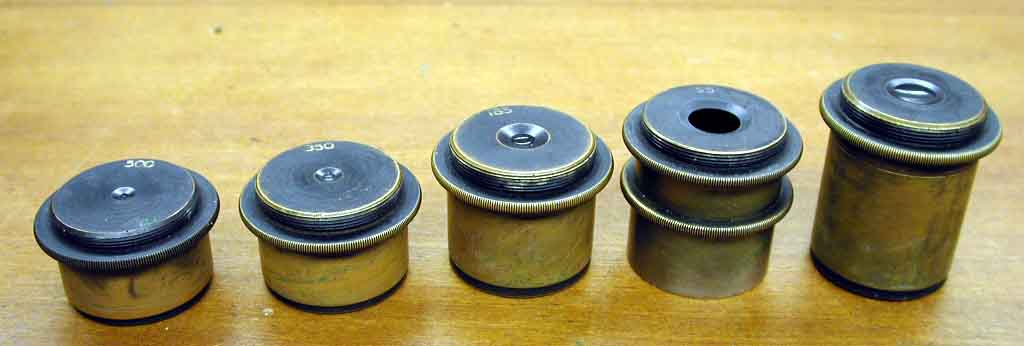 |
Five eyepieces remain with the
telescope, 4 of which are marked "500, 350, 185, 55" left to right in the
picture. Presumably these are the powers of magnification. The "55" eyepiece
is missing the eye lens. The rightmost eyepiece has no markings. |
 |
A close-up of the "185" showing
the threads at the top of the eyepieces which allowed some of the accessories
listed below to be attached. |
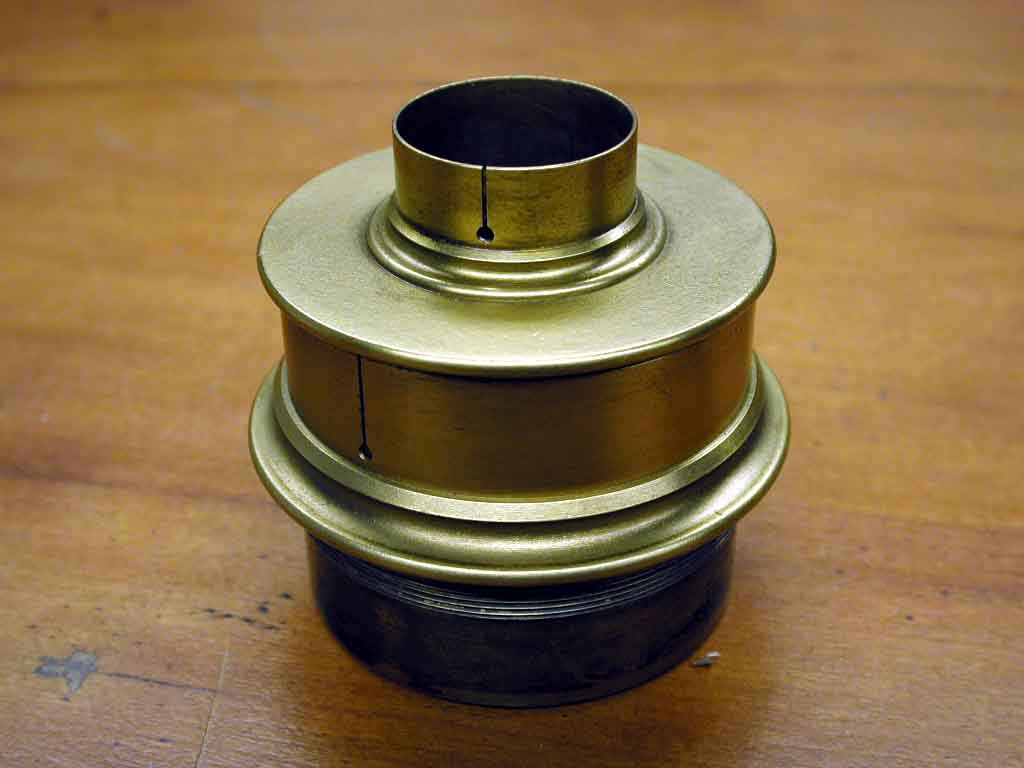 |
This is possibley a comet
eyepiece. It looks much like the ones pictured in Alvan Clark &
Sons Artists in Optics, 2nd ed., by Warner and Ariail, pg 244. |
|
|
The same eyepiece showing the
2" inch lens. |
 |
The comet eyepiece threaded
on the tailpiece. |
 |
Three filters that thread onto
the eyepieces. |
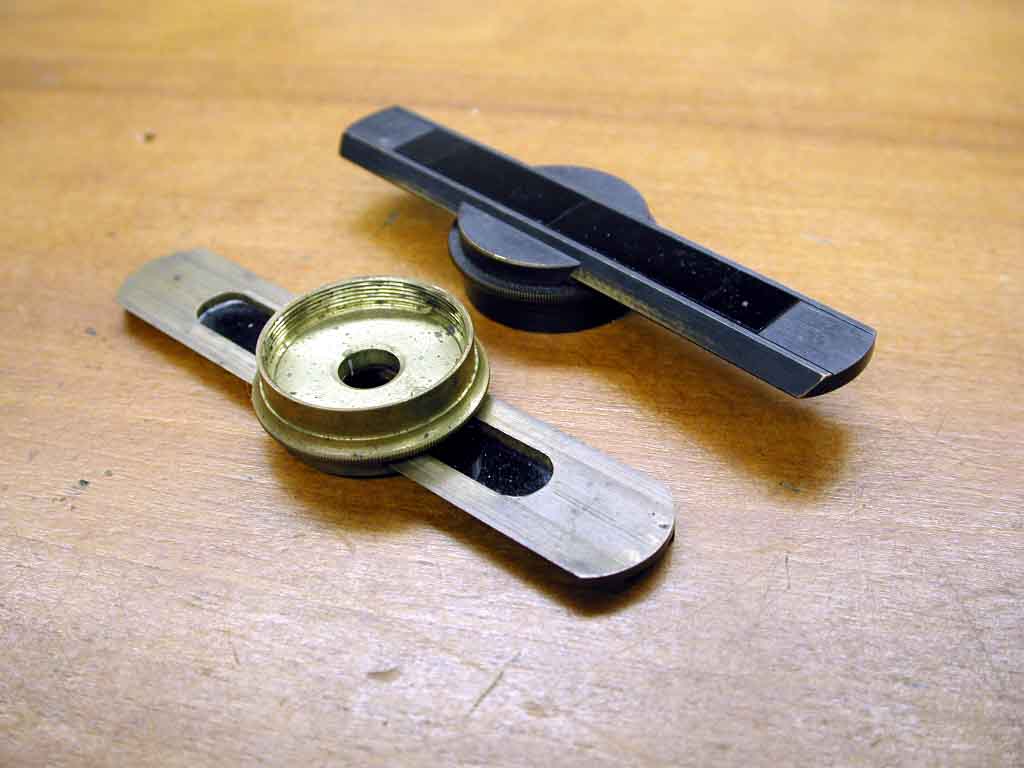 |
Two more filters that thread
onto the eyepieces. These are variable density, from end to end, and slide
over the eyepiece in a brass dovetail. |
 |
A star diagonal. This simply
makes viewing easier for objects near the zenith by bending the light path
90 degrees to the eyepiece. The long end fits into the drawtube and the
eyepiece in the shorter slotted tube. The light path is deviated by a prism
whose surface must be very accurate to avoid distortion of the image.
About 10% of the light is lost due to transmission throught he reflective
surface. |
|
|
A solar diagonal. The solar diagonal,
first made by Sir John Herschel has the same structure as the star diagonal
except the right angle prism is replaced with an elliptical prism
of 10 degrees or less. The upper face is at 45 degrees to the axes of the
two tubes and about 5% of the incident light and heat arrive at the eyepiece.
This light can then be further attenuated by the filters pictured above.
The solar diagonal (top)
and the star diagonal. The solar diagonal tapers form the bottom (thicker)
to the top (thinner). The light would be incident from the left.
Information on the diagonals
was taken from The Telescope, by Louis Bell, 1922, pg 165- 166. |










